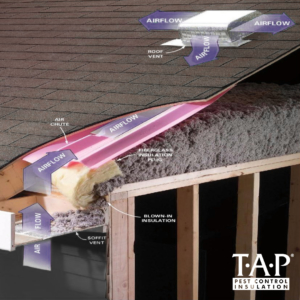 Approximately ninety percent of U.S. homes have unreasonably high levels of moisture and suffer from poor energy efficiency. Moisture can foster mold growth, structural damage, and health concerns for the home’s occupants. Here are some attic ventilation insights to consider
Approximately ninety percent of U.S. homes have unreasonably high levels of moisture and suffer from poor energy efficiency. Moisture can foster mold growth, structural damage, and health concerns for the home’s occupants. Here are some attic ventilation insights to consider
1. Roof ventilation causes confusion.
Roof ventilation (i.e., ridge, gable, soffit, or continuous soffit) is an art. While the benefits of roof ventilation is undisputed, the exact types of roof ventilation that should be used varies across the country and with each type of home design. It is always best to consult with a professional to design the best ventilation system for your home. This will ensure that your home avoids structural damage and is more energy efficient.
2. Air flow is essential.
Proper air circulation in the attic helps keep the air fresh and the roof’s surface cool to the summer elements and warm to the winter elements. If there are visibly curled or cracked shingles, missing vents, and no air exchange in the attic, the air flow must then be improved. A simple cardboard or Styrofoam baffle placed just above the soffit vent along the roof line allows air to flow in and out of the attic
3. The precise amount of attic insulation is key.
During the winter, insufficient insulation can lead to moisture problems which can foster mold. During the summer, insufficient insulation can take a toll on the home’s energy efficiency and the homeowner’s wallet. Finding the right balance of ventilation to protect the home regardless of seasonal impact is key. Consider a ratio of 1 sq. ft. of attic ventilation for every 300 sq. ft. of ceiling space.
The key to attic ventilation is to remember the 1:300 rule as stated above. A routine check by a professional is always a wise tip. When the home’s attic breathes properly, the home’s occupants breathe easier.

